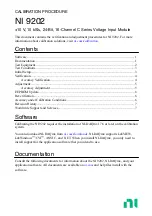
Q700
5
MS-700
Controls and Indicators
Summary: This section gives a brief overview
of the controls and indicators of the MS-700
as found on the front and rear control panels.
Front Panel Controls
and Connectors
Monitor Volume Control
– Adjusts the
volume of the headset monitor output.
Used for aural monitoring of the output
for: internal receivers, intercom input,
program audio input, or transmitter audio
signal as selected by one of the 10 monitor
("
MON
") pushbuttons. Any combination of
these ten "
MON
" button functions can be
simultaneously monitored. If additional
MS-700’s are connected via the rear panel
‘monitor cascade’ (“
MON CAS IN
” and “
MON CAS
OUT
”), any combination of the ten monitor
("
MON
") button functions on any or all of
the MS-700’s can be monitored.
Monitor Output
– Stereo 1/4" (6.35 mm)
headset jack. Use only with stereo-wired
headsets (25 ohm minimum impedance per
side); connection of mono-wired headsets
will short one side of the audio and cause
distortion.
Monitor Bar-graph
– Five segment LED
bar-graph display, dB scaled, desi3
dB (overload), -2 dB (normal peak), -7 dB
(high normal), -12 dB (normal), -24 dB
(active, low).
Receivers Controls
and Indicators
(identical for all six)
RF LED
– Indicates that the associated
receiver channel is receiving a valid RF signal,
including the tone squelch/data subcarrier.
MODE LED
–
• When off (when RF LED is on)
indicates that the associated BP-
700 beltpack is sending the "mode
A" command (see below).
• When red, indicates that the
associated BP-700 beltpack is
sending the "mode B" command.
• When green, indicates that the
associated BP-700 beltpack is
sending the "mode C" command.
• When orange, indicates that the
associated BP-700 beltpack is
sending the "mode D" command.
BATT LED
– When illuminated, indicates
that the battery in the associated beltpack
is low. When this indicator first illuminates,
approximately 30 minutes of useful battery
life remains.
ON
- When selected (as indicated by the
associated LED), enables the receiver audio
and routes it to the other audio circuitry in
the MS-700.
MON
– When selected (as indicated by the
associated LED), routes a sample of the
receiver audio to the monitor amplifier and
bar-graph. The audio may be monitored
whether on not it is selected (ON).
LVL Control
– Trims the level from the
receiver channel to accommodate soft or
loud speakers. Limited adjustment range.
SQ Control
– Adjusts the signal level
squelch circuitry in the associated receiver.
Clockwise rotation will set the receiver such
that a stronger signal is required to open
the squelch gate in the receiver. The
squelch adjust control does not affect the
tone coded squelch function.
IC Controls and Indicators
(identical for two intercom interfaces)
PWR
– Indicates that the associated
intercom line is powered. For Clear-Com
lines, the LED's are independent and show
status for each line individually. For the TW
mode, both LED's will illuminate if the two-
wire line has power on channel 2.
ON LED
– Enables the associated intercom
channel in the same manner as for the
receiver channels.
MON LED
– Operates in the same manner
as the receiver monitor (“
MON
”) switches.
IN Control
– Trims the audio level coming
from the wired intercom system (when ON).
OUT Control
– Trims the audio level from
the MS-700 to the wired intercom system
NULL Control
– For Clear-Com and TW
intercom interfaces, adjusts the different line
impedances to control the sidetone level.
PROG MON
– Enables the monitor
function for the incoming program or IFB
audio.
PROG IN
– Adjusts the level of incoming
program/IFB audio.
PROG TX MON
– Monitors the audio
input to the master station transmitter
main audio channel.
Frequency Programming
Controls
(Behind front panel door,
see detail drawing)
Function Select Switch
–
Selects the transmitter or
receiver to be programmed,
as follows:
• Position "0" – Accepts external
programming input via the 2.5 mm
connector.
• Position "1" – Programs receiver #1
frequency.
• Positions "2" through 6" – Programs
receiver #2 through #6 respectively.
• Position "7" – Programs the master
station transmitter frequency.
• Position "8" – With beltpack
connected via 2.5mm connector,
programs the beltpack receiver
frequency.
• Position "9" – With beltpack
connected, programs the beltpack
transmit frequency.


































